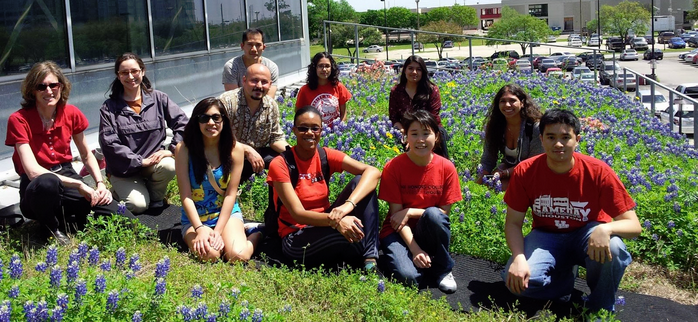.JPG) |
| The 'geyser' was visible from outside |
A bucket was placed over the busted pipe, and the stool was placed on top of the bucket to hold it down against the force of the water. Because it was unstable, we added the dolly to keep the stool in place and the water directed downward as the Plant Ops workers looked for the shutoff valve for the greenhouse water. Unfortunately, they couldn't find the valve and ended up getting wet as they fixed the busted pipe by replacing the old, weakened pipe with a new one and stronger glue.
So, the faucet is now working fine again and it is no longer leaking as well! That should be the end of the mold and algae growing around the pipe. We'd like to extend a big thanks to UH Plant Ops, since they fixed our pipe free of charge and worked well into the night doing so.

.JPG)



















